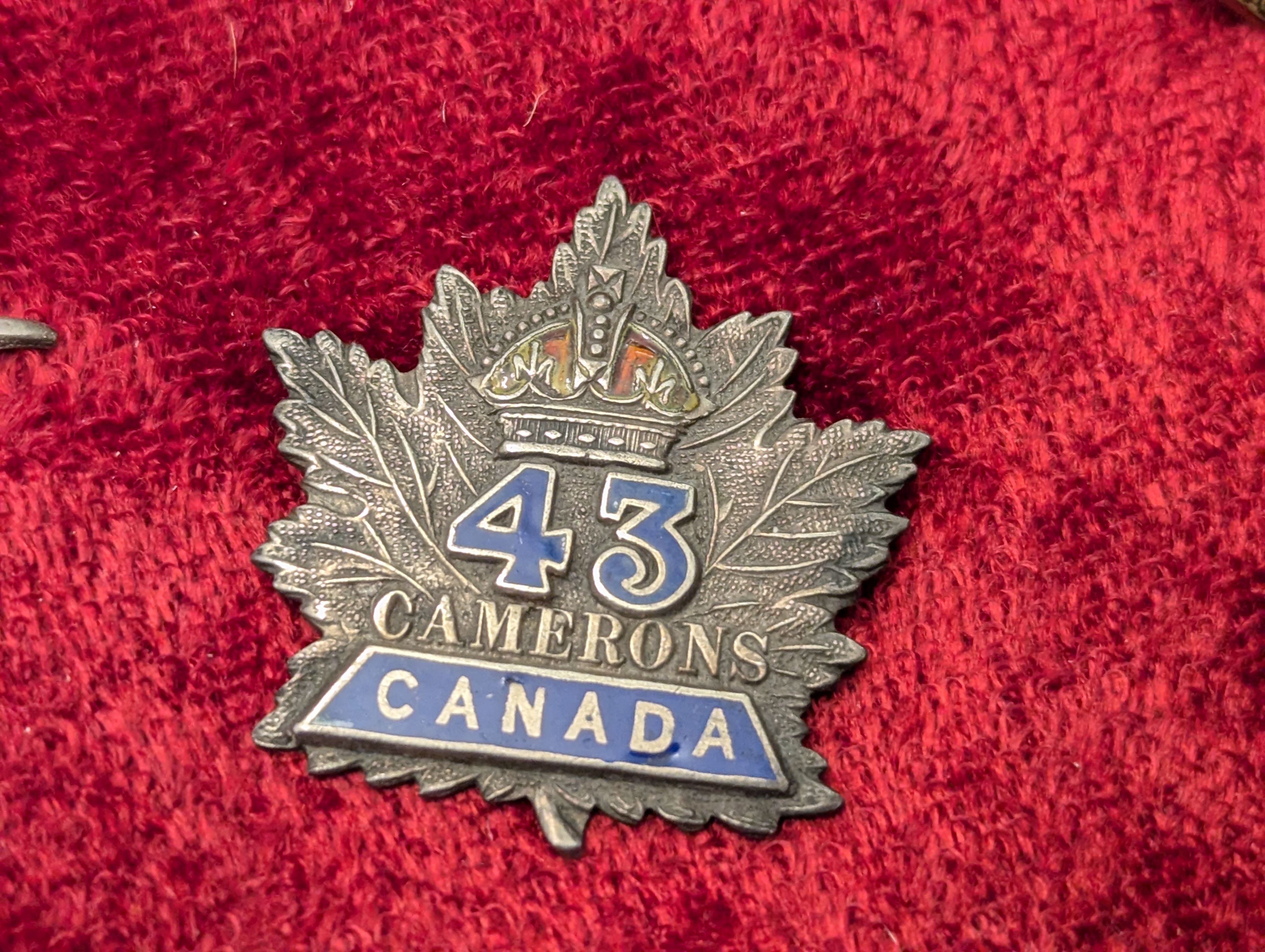
4 minute read
Metal honour
BY KERITH WADDINGTON
As Remembrance Day approaches, Cedar resident Michael Rawlins will reflect on his unique connection to the men and women who served this country during times of war.
Rawlins has been metal detecting on Vancouver Island (from Victoria to Nanaimo) for over 50 years. Although he has found everything from decorative broches and old coins to belt buckles during that time, his most cherished items are those connected to WWI and WWII: soldier ID bracelets, battalion ID pins, sweetheart pins, women’s auxiliary pins, victory coins and, soberingly, a German cross and swastika lapel pin.
These items are protected and displayed in cases on his walls at home.
“I do often wonder about the men and women … the stories that these badges and insignia could tell,” said Rawlins. “This is why I hold them in such reverence — not for the items, but [for] the people whose lives were affected by the war.”
For those not in the know, sweetheart pins are little brooches that are miniature replicas of military regiment cap badges and insignia. They were labelled as such because soldiers usually gave them as tokens of love to their wives and girlfriends before they left for active service.
Rawlins also has a silver sweetheart bracelet in his collection, which was given to a soldier before he left for battle. The engraving on the back reads “To Clyde with love Doreen.” He often wonders whatever happened to that couple, and the others whose mementos he now has.

One of the battalion pins in Rawlins’s collection has a rooster on it. “It was worn by a member of the ‘BC Bantams’ from Victoria during WWI,” he said. “To be a member of this core, you had to be shorter than the standard height required to enlist, which was five foot four. The war effort made room for everyone.”
The “BC Pioneers” pin in Rawlins’s collection has a beaver engraved on it, while the “Grenadiers” have an exploding grenade on their pin.
Rawlins admits that his favourite find is an ID bracelet from a WWII pilot who was tragically shot down at 20 years of age in 1943. “It is my favourite just because I know the story,” said Rawlins. “Based on the inscription, I was able to track down the pilot’s extended family, but they weren’t interested in having the bracelet returned. So, it’s got a place of honour, in my case, at home.”
And what of the German cross?
“It could have been taken from the body of a German soldier or given as a gift among buddies,” said Rawlins. “We’ll never know the story behind it.”
There is one thing, however, that Rawlins is certain of: “Soldiers weren’t out there fighting for king and country. They were fighting for the guy beside them.”
Rawlins’s own father served in WWII. Although he always told his children he was a cook, Rawlins heard a different story years ago when he inadvertently met a WWII vet who had known his dad.
“Turns out he wasn’t exactly a cook.” Rawlins laughed. “The knife he left me was a commando knife. He was known as ‘Tex,’ and he used to parachute behind enemy lines to cause havoc.”
The story Rawlins heard about his father?
“After being dropped behind enemy lines, he saw two German soldiers dragging away a young girl; he managed to ‘discourage’ the men from their endeavours,” he said meaningfully. “My father received letters from that young lady for years afterwards, thanking him for saving her life.”
Another pin in Rawlins’s collection is from the Canadian Machine Gun Core. “When WWII began, the Germans had plenty of machine guns, but the British thought it was ‘ungentlemanly’ to use such a weapon in battle; they limited the number of such weapons to two per battalion. Battalions were about 1200 men in size!”
Needless to say, as the war progressed, the British and their allies adopted machine guns, and entire regiments were fitted with the weapons.
Rawlins says that even after all these years, getting a reading from his metal detector is “still very exciting.” He says he is careful to do his detecting away from groomed areas and, as a result, often ends up in overgrowth. But wherever he digs, he is careful to fill the hole in afterwards. “I leave it just as I find it,” he says. “It’s the respectful thing to do.”
Rawlins will show his collection at the Ladysmith Museum’s special Remembrance Day exhibit on Nov 11 from 10 a.m. to 1:30 p.m.
As November 11 approaches, Rawlins and many others are certain to reflect upon the people whose lives have been — and continue to be — touched by war.





